What better way to kick off this blog than by writing about one of my favorite topics: level design. I’ve always found it to be one of the most fascinating (and most challenging) parts of game design and development.
The idea for this article had been around for a while, but it finally came together after several conversations with friends who, like me, are constantly thinking about level design. Between doubts, frustrations, and laughs, I realized just how passionate I am about the topic… and also how rarely it’s talked about in a clear, approachable, and honest way.
Because, let’s be blunt: level design is not easy. It’s damn hard, actually. And that’s exactly why I find it so interesting.
🌌 Has this ever happened to you?#
You’ve probably experienced being so immersed in a video game that you progress and overcome challenges without the need for explicit instructions. The rules reveal themselves subtly and intuitively, allowing you to learn and adapt without breaking the magic of exploration… or interrupting the story the world is beginning to tell you.
This approach is the result of good Level Design, which not only integrates user experience (UX) principles, but also combines space, mechanics, and visual cues to create a smooth, emotional, and narratively rich experience.
But how do you build an experience of this caliber?
To understand how this level of immersion is achieved, it’s essential to explore the fundamentals of Level Design.
And to do that, we should first break down the term and understand what “Level” really means—and what “Design” actually involves.
🧱 What does Level mean?#
The term level in video games can have different meanings depending on the context:

In the context of Level Design, a level refers to a playable section: a bounded space where events, challenges, decisions, and experiences take place. It is a container of possibilities, where the game’s mechanics unfold and are channeled into a specific experience for the player.
“A level is a space of possibilities.” — Michael Beardwood
A level can be:
Predefined (like the maps in Celeste)
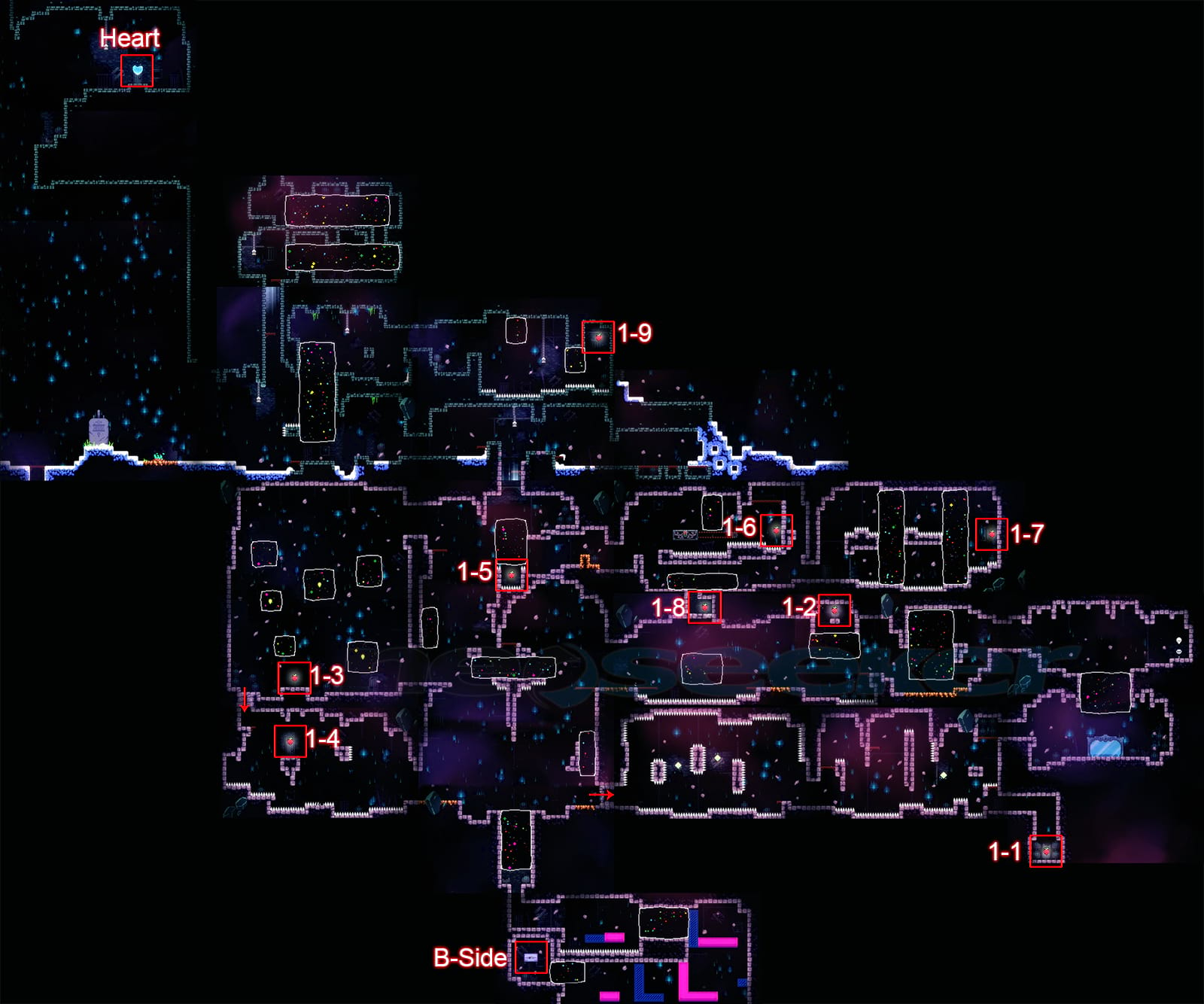
Predefined Map from Celeste Chapter 2 via Neoseeker Random (The Binding of Isaac)
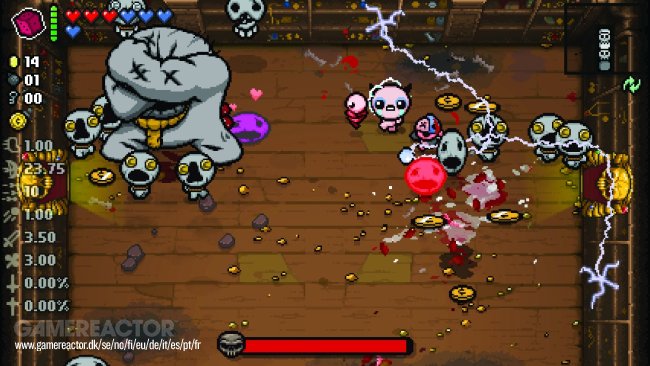
Random Map from The Binding of Isaac via Gamereactor.EU Procedural (Minecraft)

Procedural Map from Minecraft via Gamespot Or a combination (Spelunky)
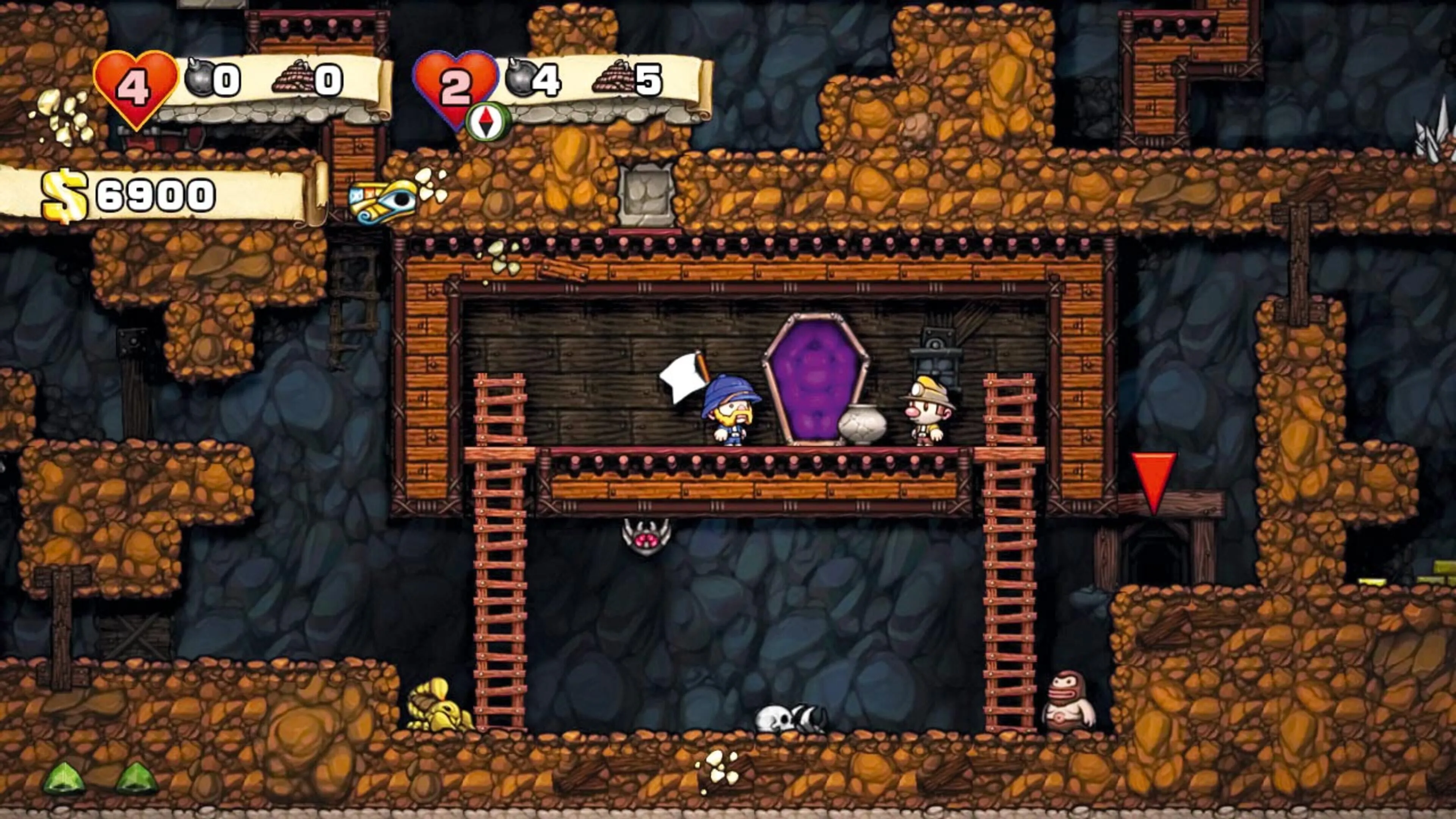
Map from Spelunky via GameRevolution
Beyond the type of generation, they all serve the same purpose: to shape the gameplay experience through the use of space, rules, and pacing.
🎨 What do we mean by Design?#
The term design refers to the process of planning, structuring, and creating elements with a specific purpose.
Whether in architecture, technology, or video games, design involves a series of intentional decisions: What is included? What is removed? How is it organized to fulfill its function?
In video games, design isn’t limited to aesthetics—it encompasses how the player interacts with, understands, and experiences what is presented to them. And it’s an iterative process: it’s tested, adjusted, corrected, and tested again.
🧭 What is Level Design?#
Level Design is the branch of Game Design responsible for creating the playable spaces where the player lives their experience.
It’s about finding the balance between:
- the challenging and the accessible
- the guided and the exploratory
- the playful and the meaningful
🎯 In summary:#
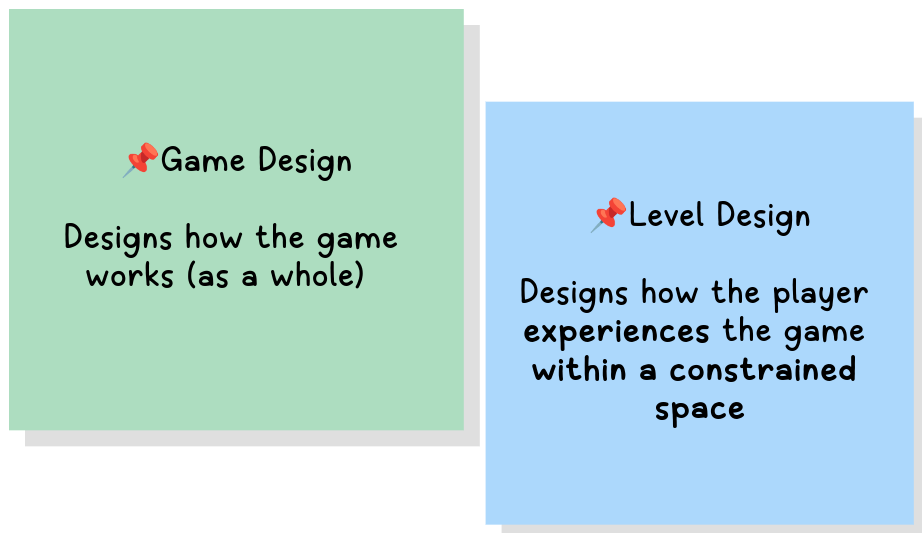
🧪 An observation from practice#
As I played and analyzed different video games —from classic platformers to more experimental or narrative-driven experiences— I started to notice something that kept repeating.
The levels that left the biggest mark on me weren’t necessarily the most complex or visually striking. They were the ones where everything seemed to have a purpose: every step invited exploration, every obstacle triggered an emotion, and every environment told a story—even without words.
Over time, I realized that these well-designed levels shared three key ingredients.
First, there was the playable content: the tangible space, the platforms, the enemies, the objects… everything I can touch or interact with as a player.
Then, there was the emotional experience: what that space made me feel. Is it challenging? Is it calm? Does it create tension, curiosity, or urgency? What effect do the music and environmental sounds have on me?
And finally, there was the narrative: not just the written story, but what the level tells me through its layout, its pacing, its visual language.
🧩 Three Essential Elements of Level Design#
Over time, I came to understand that a good level is born from the balance between what the player does, what they feel, and what they understand. To organize these ideas, I summarized them in a simple mnemonic: CEN.
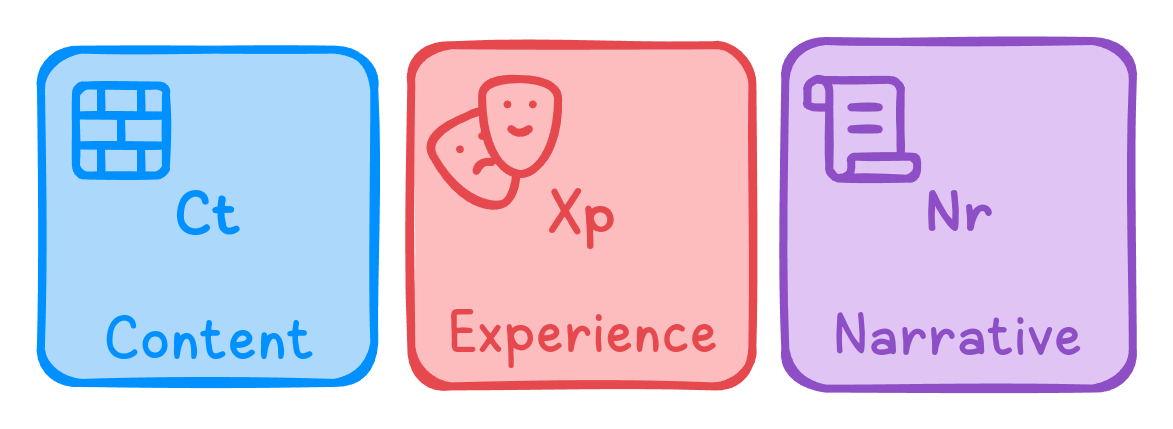
- C → Content: Elements and mechanics the player interacts with.
- E → Experience: The emotions and challenges encountered along the way.
- N → Narrative: What the level communicates visually, structurally, or interactively.
📜 Narrative in Video Games: Beyond the Script#
It’s important to note that narrative in video games isn’t always tied to a written story or dialogue.
There are at least three ways in which narrative can manifest within a game:
Embedded Narrative (Predefined): A story written by the developer that the player follows, told through cutscenes, dialogue, missions, or the world’s lore. Example: The Last of Us, where the player experiences a pre-written story.
Emergent Narrative (Dynamic): Arises from the player’s interaction with the game system, based on unpredictable events that create unique experiences. Example: Minecraft, where each player crafts their own adventure.
Mechanical Narrative (Implicit in design): A story conveyed through gameplay and rules, without needing text or cutscenes. Example: Celeste, where every precise jump, every fall, and every retry reflect the protagonist’s inner journey and her struggle to overcome her fears. The difficulty doesn’t just challenge—it tells a story.
Even games like Tetris, with no characters or written story, convey a narrative: each match can be seen as a battle against chaos, a metaphor for organizing disorder in a system that inevitably overwhelms you.
🔍 Applying CEN: From Concept to Practice#
Now that we understand what Level Design is and how it is structured through the CEN model —Content, Experience, and Narrative— it’s time to see how these principles are applied in real-world cases.
Below, we’ll analyze different game levels from this perspective. Each example will be broken down using the CEN mnemonic, allowing us to understand how each aspect contributes to the whole and what design choices make a level work… or not.
🧭 Level Design Case 1: Narrated Walkthrough - The Silent Tutorial of Chants of Sennaar#
To understand how the CEN model (Content, Experience, Narrative) is applied in practice, let’s walk through the tutorial level of Chants of Sennaar. This first section of the game is carefully designed to introduce us to its universe without dialogue, without combat, and with a minimal interface.
What follows is a narrative description of the initial journey. Through this analysis, we’ll observe how the environment itself teaches, guides, and tells a silent yet profound story.
Chants of Sennaar opens with no cutscenes, no combat, and barely any interface. Through its monumental environment and subtle cues, it teaches the player to move, observe, interpret, and begin to understand its world.
🟠 Zone 1 - The Awakening#
The game begins on an elevated platform, surrounded by voids. From the very first moment, the player is placed atop a massive structure, bathed in sunlight that casts long, dramatic shadows. This setting conveys grandeur, mystery, and solemnity.
A soft oboe plays while the first explicit UI element appears: a brief instruction inviting the player to click on the environment. There is no narrator or explanatory text—movement is activated intuitively.
The architecture is austere and monumental, evoking a sense of antiquity and decay. In the prevailing silence, only the character’s footsteps and the wind can be heard. A key detail is revealed naturally: the player cannot fall into the void. This implies that “dying” is not a central mechanic, providing a sense of safety during exploration.
The only way forward is down a set of illuminated stairs. The light gently guides the direction without the need for arrows or maps. A long hallway flanked by pillars leads the way. At the end, a portal with stairs takes the player to the next area.
🟠 Zone 2 - Vertical Clarity#
The second area slightly expands the scale. We see a wider hallway below and a narrower one above, connected by stairs. Once again, lighting highlights the path—casting more intense light on the correct route.
The environment remains clean and structured, using space to guide progression. There are no unnecessary elements. The player continues forward, guided by the rhythm of the environment. At the end of the upper hallway, another light-filled portal signals the transition to a new area.
🟠 Zone 3 - The Canal, the Lever, and the Journal#
Here, a notable change occurs: the environment gains density. A water canal cuts through the area, and the space is no longer completely linear.
We see a lever on the other side of the canal, seemingly connected to a gate. However, access is blocked—the stairs that would connect both sides are submerged. This suggests an environmental puzzle and a new layer of complexity.
To the left, a wall prevents further progress. Only one path remains: going up a subtly lit staircase, where there’s a lever next to a closed door.
As we approach, a new UI element appears: three icons indicating possible interactions. The player isn’t given a direct order, but must infer their function. This is the introduction to the observation mechanic.
When hovering the cursor over the lever, the icon changes to “observe” (👁️). Activating it formally introduces the Journal: a logbook where glyphs are recorded. This is the beginning of Chants of Sennaar’s core mechanic: translating and understanding symbols.
The interface lets us open the Journal and tells us that it’s up to the player to uncover the meanings of the glyphs. It’s no longer just about movement, but about interpreting and deducing.
The lever has a sign with two groups of symbols (one above, one below), and the player must associate them with the lever’s possible states. It’s a design based on the “learning by doing” principle.
Upon activating the lever, the game plays a short cinematic-style animation with black bars: the door opens, revealing a new area.
🟠 Zone 4 - The First Puzzle and the End of Our Short Journey#
Up to this point in the tutorial, Chants of Sennaar features no character dialogue or lengthy text. What appears are minimal prompts and symbolic glyphs, subtly and functionally integrated without breaking immersion. Through this design, the player learns to move, explore, observe, and even begin translating—entirely without explicit instructions or narrators.
The experience continues to build new layers of complexity, and the first official puzzle is introduced—but I’d rather not spoil any more. This is a game best enjoyed by discovering it yourself, step by step. If you’re intrigued by what you’ve seen so far, I encourage you to get it on your favorite platform and experience how carefully crafted level design can teach, move, and tell a story—all at once.
This opening segment is a great example of how well-executed Level Design can teach you how to play, move you emotionally, and tell a story—all without traditional dialogue.
🧠 CEN Analysis - Chants of Sennaar Tutorial
🟦 Ct - Content#
| Element | Description |
|---|---|
| Spatial Elements | Platforms, stairs, corridors, portals, doors, and levers introduced progressively. |
| Core Mechanic | The Journal is introduced through a contextual action (👁️ observing the lever), not forced. |
| Environmental Safety | No risk of falling or dying; movement is limited to facilitate learning. |
| Visual Language | Glyphs and visual cues guide interaction and act as a bridge to the translation system. |
| Efficient Design | Emphasis on spatial clarity and intuitive progression without overwhelming the player. |
🟥 Xp - Experience#
| Element | Description |
|---|---|
| Ambience | A sense of calm, mystery, and discovery from the very beginning. |
| Sound Design | Soft ambient music and subtle effects (wind, footsteps) create an introspective atmosphere. |
| Visual Guidance | Lighting and shadows subtly guide exploration without arrows or markers. |
| Feedback | Every action (opening doors, activating levers) provides clear and satisfying visual feedback. |
| Player Emotion | The player feels like an explorer: advancing by their own decisions, not artificial pushes. |
| Learning | The player learns the game’s core mechanic intuitively. |
🟪 Nr - Narrative#
| Type of Narrative | Description |
|---|---|
| Visual | Monumental architecture, decay, and sealed doors evoke an ancient and fragmented world. |
| Emergent | The player creates meaning through experimentation with glyphs, blocked paths, and mechanisms. |
| Mechanical | Using the Journal as a translation tool turns decoding into a means of progression. |
| Style | No traditional narrative text: the world “speaks” through its systems, pacing, and form. |
🧭 Level Design Case 2: Custom Level from Super Mario Maker 2#
🚧 Under Construction
🧾 Conclusions#
Level design is much more than placing platforms, enemies, or doors. It’s the art of creating spaces that are not only played, but also felt and understood. Through the balance of Content, Experience, and Narrative (the CEN model), we can design worlds that teach without speaking, that move without forcing, and that tell stories without lengthy scripts.
Chants of Sennaar reminds us that a good tutorial doesn’t need grandiose words to teach us how to play: it just needs a carefully constructed environment, clear visual direction, and mechanics that speak for themselves.
As designers, we have the power (and the responsibility) to think of each space as an invitation to explore, to discover, and to feel. Because in the end, what the player remembers isn’t just what they did—it’s what they experienced.
Are you interested in learning more about Level Design? This blog will be my space to continue exploring, analyzing, and sharing ideas about game design from a practical and emotional perspective.
I invite you to keep reading and, if you feel like it, to share your own levels, ideas, or experiences.
Thanks for making it this far. 🙌
📚 References#
Beardwood, M. (2023). Unveiling Game Design: From Concepts to Creations. CRC Press.
Bycer, J. (2024). Game Design Deep Dive: Trading and Collectible Card Games. CRC Press.
Kramarzewski, A., & De Nucci, E. (2023). Practical Game Design: A Modern and Comprehensive Guide to Video Game Design. Packt Publishing.
Ricchiuti, D. (2023). Game Design Tools: Cognitive, Psychological, and Practical Approaches. CRC Press.
Schell, J. (2020). The Art of Game Design: A Book of Lenses (3rd ed.). CRC Press.
Stahlke, S., & Mirza-Babaei, P. (2022). The Game Designer’s Playbook: An Introduction to Game Interaction Design. Oxford University Press.
Wang, W. (2023). The Structure of Game Design. Springer.
Csikszentmihalyi, M. (2008). Flow: The Psychology of Optimal Experience. Harper Perennial Modern Classics.
